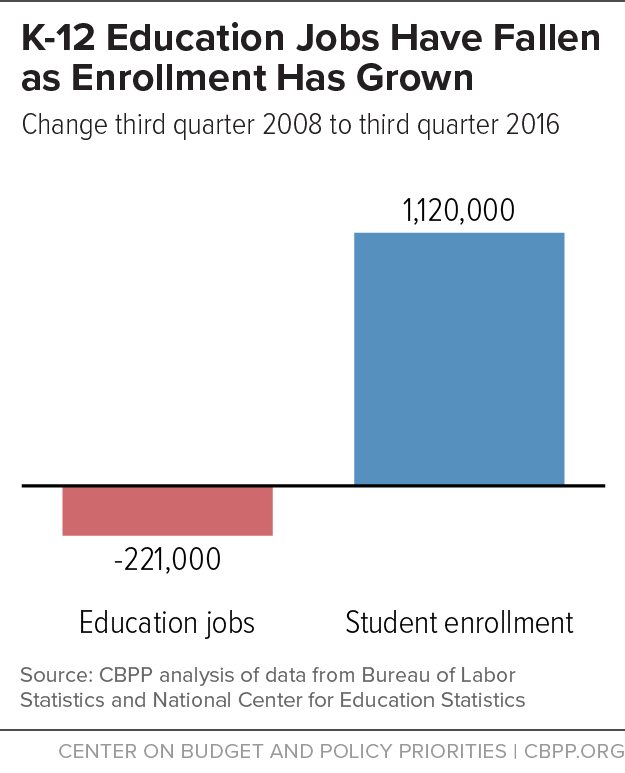off the charts
POLICY INSIGHT
BEYOND THE NUMBERS
BEYOND THE NUMBERS
Many states have pursued education reforms to improve teacher quality, better prepare young children for school, and turn around the lowest-achieving schools, among other goals. The widespread cuts in state K-12 spending we’ve documented in our new report can undermine those reforms by limiting the funds available to improve schools and by undercutting specific reform initiatives. Reforms endangered by funding cuts include:
- Improving teacher quality. Research suggests that teacher quality is the most important school-based factor in students’ success. Recruiting, developing, and retaining high-quality teachers are therefore essential to improving student achievement. School budget cuts make these tasks much harder. Teacher salaries make up a large share of public education spending, so funding cuts invariably restrict districts’ ability to expand teaching staffs and supplement wages. In 39 states, the average teacher’s salary fell relative to inflation between the 2010 and 2014 school years (the latest year for which we have data).
- Trimming class size. Smaller class sizes can boost achievement, especially in the early grades and for low-income students, evidence suggests. Yet small class sizes are hard to sustain when schools cut spending and enrollment rises. In Nevada, for example, the student-to-teacher ratio rose from 18.3 to 20.6 between the 2008 and 2014 school years. The United States as a whole has about 1,120,000 more K-12 students this school year than in 2008 but 221,000 fewer teachers and other school workers (see graph).
- Expanding learning time. Many experts believe that extending student learning time can improve achievement. Budget cuts make that harder to do because it generally adds costs. Some states have even cut student learning time due to budget cuts. When Arizona eliminated funding for full-day kindergarten, for example, some school districts responded by offering only a half-day program or by charging a fee for a full-day program, likely reducing the number of children who can attend.
- Providing high-quality early education. Pre-kindergarten or preschool programs can improve cognitive skills, especially for disadvantaged children, according to numerous studies, but many states cut funding for those programs after the recession hit. In the average state, preschool funding per enrolled child fell by 5 percent between 2008 and 2015, after adjusting for inflation.
Topics:
Stay up to date
Receive the latest news and reports from the Center

